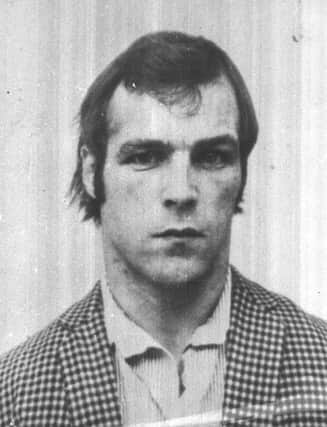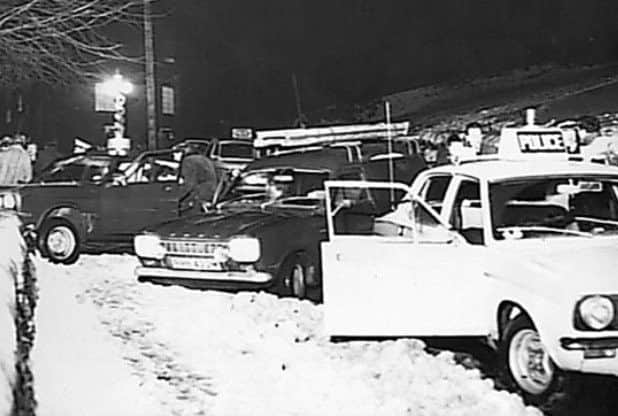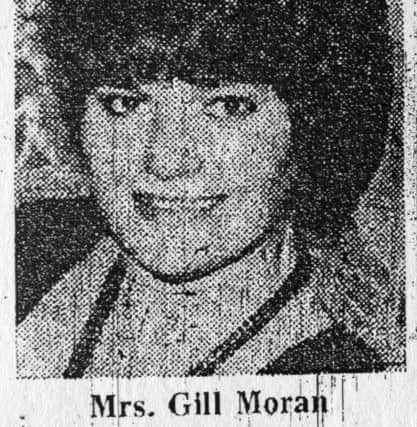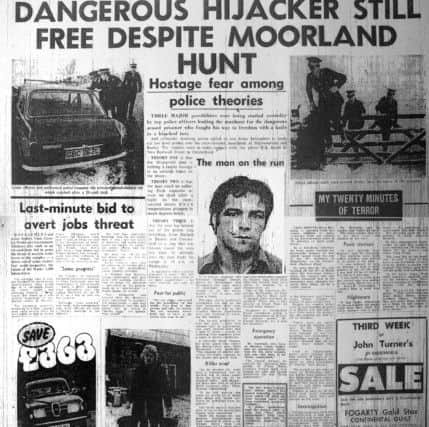'˜The bullet just bounced off his head and made him more wild'


On a cold winter’s day in 1977, the 30-year-old killed four members of the same family after holding them hostage in a farmhouse near Chesterfield.
He then took the surviving family member on a car chase, before threatening her with an axe during a stand-off with police.
Advertisement
Hide AdAdvertisement
Hide AdPeter Howse, Chief Inspector of the Buxton South Sub-division of Derbyshire Police, caught up with him in the tiny Cheshire village of Rainow, where the story’s bloody denouement occurred.


After a 50-minute long negotiation - with hostage Gill Moran’s life hanging in the balance - the tension broke.
Peter says: “This was the first time I had met Hughes but I knew all about his history. He was a psychopath.
“He was awaiting trial for a rape and grievous bodily harm in Chesterfield.
Advertisement
Hide AdAdvertisement
Hide Ad“He had followed a young couple in the park. He watched as they engaged in sexual activity behind the swimming baths and then he came upon them. He hit the man with half a brick and dragged the woman to the river bank where he raped her.


“He was arrested and charged. He told people in prison he wanted to go to Lancashire to kill his ex-wife. They had a daughter together and they lived in Blackpool.”
Hughes, who began his life of crime at aged 14, was transferred from prison in Leicester to Chesterfield by taxi which was how he was able to execute his manic plan on January 12. With such a dangerous prisoner, Peter says transferring him by taxi was madness.
As a category ‘C’ prisoner, Hughes was even allowed to work in the kitchen - giving him access to knives.
Advertisement
Hide AdAdvertisement
Hide AdHe used one of these knives to devastating effect on the prison officers in the taxi - stabbing them both in the neck.


Like a scene from a horror movie he fled across the snow-covered moorland to the Moran family’s luxury Eastmoor home, known as Pottery Cottage, where he embarked upon his 55-hour reign of terror.
Hughes picked up two axes kept outside for chopping wood before silently creeping into the house, where he found Arthur Minton, a 72-year-old retired grocer and his wife, Amy.
Shortly afterwards, their 38-year-old daughter Gill Moran, returned, to be told there was a man in the house who would kill them unless they complied with his wishes. Gill’s 10-year-old daughter Sarah came home from school, followed by her husband, Richard.
Advertisement
Hide AdAdvertisement
Hide AdThe family endured three days of torture and fear as he held them captive.


Peter says: “Hughes took a fancy to Gill and used her to run his errands. He killed her daughter and father the first night, but he told her they were alive so she would do what he said.
“On the third night he had tied up her husband and mum, Amy. Amy had managed to free herself and was about to untie Richard but Hughes came back and slashed her throat and stabbed Richard.
“Hughes dragged Gill to a neighbour’s house, where she asked her neighbour Len Newman to give their car a tow with his pick-up to help get it to start. After he helped them, they fled and he rang the police. Just before they left Gill mouthed ‘help’ and Amy, despite her injuries managed to cry out for help before she died.
Advertisement
Hide AdAdvertisement
Hide Ad“Hughes was involved in a high speed chase through North Derbyshire. He was driving from one side of the road to another at fast speeds. It was very hectic. These were the worst weather conditions Derbyshire had seen for about 20 years. The roads were blocked. We didn’t have great chances of finding him.
“As he was going towards Cheshire, I called for a road block and another officer put a bus across the road at Rainow.
“He tried to avoid the bus and crashed into a wall.


“I ran to the car and Hughes held an axe above Gill’s head, threatening to kill her if I didn’t back off.
“I tried to negotiate for 50 minutes until the fire arms officers came. They had never fired a gun before, but had the correct training.
Advertisement
Hide AdAdvertisement
Hide Ad“I was trying to persuade him to give himself up. He was demanding another car and I thought if we could tempt him into the other car, I would have a better chance of taking him. He told Gill to get out the passenger door but she was terrified and refused to move. He lost control and screamed at her and at me.
“He shouted ‘right, your time is up’ and went for her. I tried to stop him and dived through the window of the car. Then one of the firearms officers shot through the back window.
“It hit him in the back of head but amazingly didn’t penetrate his skull - it just bounced off his head and made him more wild as he continued to fight.
“It took four shots to kill him. It was Det Cons Nicholls who ran to the side of the door and fired the final shot. It went in at his shoulder but ended up entering his heart and killing him.
Advertisement
Hide AdAdvertisement
Hide Ad“Gill ran out of the car and, apart from a graze on her forehead, she was physically unharmed.
“Some people say I was either brave or stupid, but I say neither. It was reflex action and that is what we do. I had no time to think - I just had to act. I had to save her life. He had killed four members of her family, so I knew he would kill Gill if he had the chance.”
After being debriefed by CID, the father-of-two stayed in the area overnight before travelling back to Bakewell the next day.
He was forbidden from talking about what had happened with any of his colleagues until the inquest had concluded three months later and he was awarded the Queen’s Commendation for Bravery for his actions.
Advertisement
Hide AdAdvertisement
Hide AdHe adds: “It was pretty traumatic but I didn’t have anyone to talk to. My wife, Beryl, had been stranded in Chesterfield that night because of the snow.
“I was conscious of the fact that if Gill had been killed and he had survived, it would have been a different story.
“It is a thin line between success and failure. We saved her life, by some judgement, luck and chance.
“When I went back in to work everybody just stopped talking immediately. Eventually, one by one they came up to my office to shake my hand.”
Advertisement
Hide AdAdvertisement
Hide AdAfter the inquest, there was understandably a lot of press interest.
Television, radio and press were all there wanting to talk to Peter about the heroic aspects of what happened. But four members of Gill Moran’s family were dead - and she was left to pick up the pieces of her shattered life.
“I actually met with her three months after it all happened,” recalls Peter. “She had lost a lot of weight. We just chatted - she wanted to say thank you.”
Now 79, Peter retired from policing in 1992, having risen to the rank of Deputy Chief Constable in Norfolk.
Advertisement
Hide AdAdvertisement
Hide AdHe says when he tells people the story of what happened that terrible night, they cannot believe he survived.
He is now in the process of writing a book about the case and as well as the story’s dramatic conclusion, the book covers the case in forensic detail, including the terrible events at the Pottery Cottage.
Peter, who has two grandchildren and two great-grandchildren, adds: “There have been several conversations about writing a play or film about it but it was too recent. After 40 years it seems an appropriate time.”